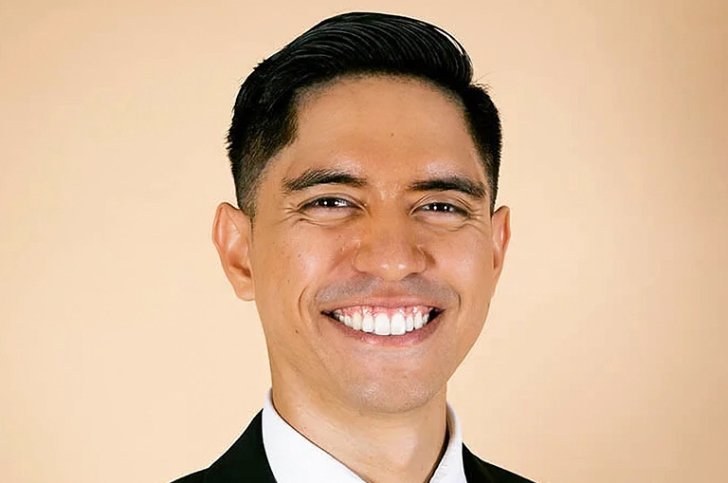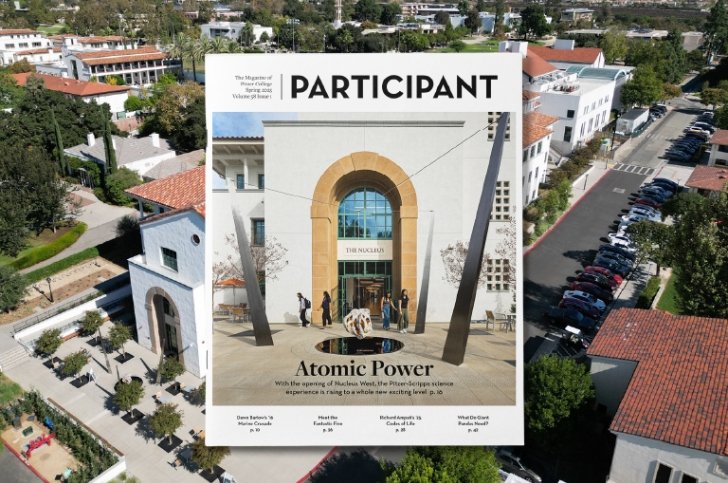Robert Redford Conservancy Launches Tool to Transform Decision Making in Southern California
Innovative digital tool provides a framework for policymakers, community members, educators, and advocates to prioritize community and climate
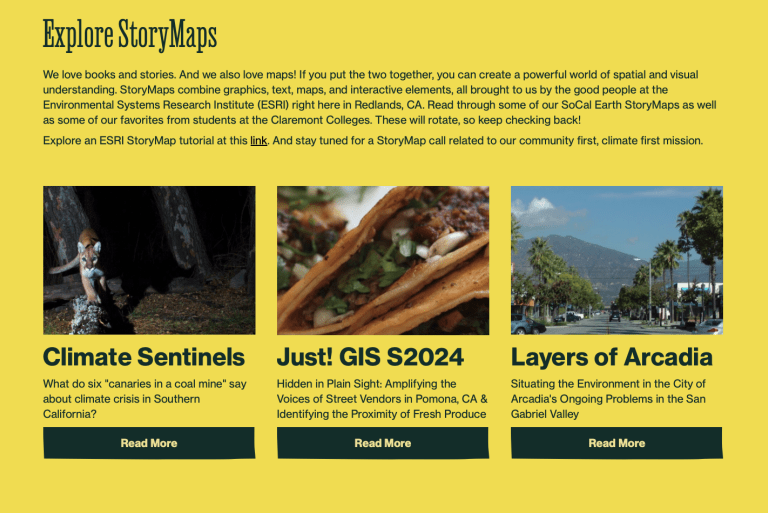
Pitzer College's Robert Redford Conservancy for Southern California Sustainability has launched SoCal Earth, a tool designed to empower Southern California policymakers, municipal planners, community members, students, and developers to engage in climate-first and community-first decision making. Alongside this launch, the Redford Conservancy updated its mission statement to reflect a deeper commitment to equitable climate action.
SoCal Earth is an online dashboard that partners with Esri, the global leader in mapping and spatial data, to provide users with the best information to combat climate change and protect Southern California's communities and habitats. The data reveal the impacts of industrial development and pollution on air, land, and water quality—aiding in planning for a regenerative, equitable future. Utilizing "community-first, climate-first" decision-making tools is a key facet of the Robert Redford Conservancy's new mission.
"I grew up in Southern California, and I watched as the green spaces in between communities disappeared, giving way to development, with the skyline disappearing behind the smog. At this pivotal time in human history, we need to be connected to our environment more than ever. SoCal Earth provides information and tools for the community to make informed decisions and take action. The Conservancy's partnerships and continuing advocacy have informed a transformative vision of the future, and a pathway for us all to be a part of positive change," said Robert Redford, notable actor and environmentalist, and namesake of the Robert Redford Conservancy for Southern California Sustainability.
Media coverage of the launch included an LAist report on the new platform that was shared on local NPR stations and an opinion piece written by Conservancy Director Susan Phillips that was published in the papers of the SoCal News Group.
The Robert Redford Conservancy's new mission statement underscores the Conservancy's dedication to a holistic approach to policy and decision making that prioritizes vulnerable communities and the climate.
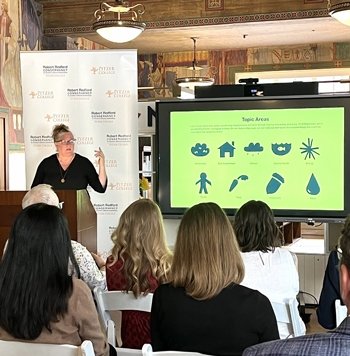
"SoCal Earth is an experiment in environmental communication. It's time to shift course from decades of policy decisions that disregarded the planet and its most impacted populations. With our community first, climate first approach, we can empower everyone from fifth graders to municipal planners to ensure that the voices of those most affected by climate change are not only heard but prioritized," said Susan Phillips, Director of the Robert Redford Conservancy.
Southern California faces a unique set of challenges, including the need to address decades of environmental racism and outdated policymaking that have marginalized Black, Brown, and Indigenous communities while contributing to climate change. The Inland Empire, for example, suffers from pollution due to logistics infrastructure and warehouses that could otherwise serve as green spaces, community centers, commercial opportunities, or centers for innovation. SoCal Earth provides a framework for addressing historic inequities while promoting sustainable land use practices.
The SoCal Earth website utilizes Esri's interactive GIS mapping technology, making use of data sets from environmental justice indicators to biodiversity markers. This allows users to assess Southern California's progress in combating climate change and to identify appropriate actions. Users can map the impacts of climate change, industrial development, and resource scarcity on vulnerable species, places, and communities, pinpointing the areas susceptible to climate pressure.
"SoCal Earth is a highly localized version of a much broader state and global movement to protect our most precious resources at this time of tremendous biodiversity loss and catastrophic warming. SoCal Earth is the first website we've ever seen that presents the most serious issues in open and even playful ways, with humor as well as with data. It's been such a fruitful collaboration between Esri and Pitzer's Robert Redford Conservancy. The community first, climate first message is deceptively simple. This message, combined with spatial data, just might make it possible for people to be empowered rather than overwhelmed by the challenges we face as a society," said Caitlin Smith, senior geodesign consultant at Esri.
"With all that is on the line for our planet and its denizens, SoCal Earth's vision of a 'community first, climate first' call to action is a vital one. Many in our Pitzer community have been involved in this effort, which is exactly what we need in Southern California—and beyond—for the sake of our oceans, our rich species and habitats, and ourselves and our children," said Strom C. Thacker, President of Pitzer College.
The Robert Redford Conservancy continues to garner signatures for SoCal Earth's call to action from policymakers, organizers, and community members, showcasing broad support for community-first, climate-first decision-making. Conservation groups, clean energy advocates, and environmental justice organizations like the Center for Community Action and Environmental Justice (CCAEJ) have endorsed the project, emphasizing the importance of prioritizing vulnerable societies and ecosystems through this approach.
"We stand with the Robert Redford Conservancy in advocating for a future where all communities are empowered to safeguard their health and environments. The climate crisis and environmental injustice combined are creating more severe problems than we've ever faced, and our communities are being hit hardest. In places like the Inland Empire, it's time to create something entirely new–the kind of inclusive, regenerative policymaking and planning that addresses past harms and that values our undervalued land and its people. SoCal Earth is a pivotal tool for environmental justice throughout Southern California that puts EJ communities at center stage," said Ana González, Executive Director of the Center for Community Action and Environmental Justice (CCAEJ).
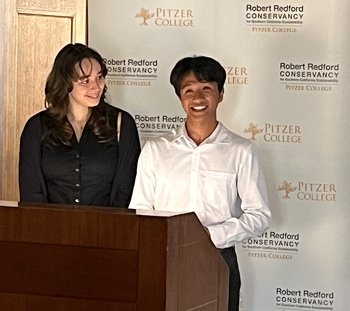
"SoCal Earth makes complex data accessible to the public, providing information that communities, public and private sectors can use to understand and take action to leverage the power of nature to create a more resilient future. This innovative and engaging tool will help improve community health, enhance resilience to climate change, and protect the diverse ecosystems here in Southern California, a global biodiversity hotspot," said Piper Wallingford, Climate Resilience Scientist in The Nature Conservancy of California's Climate Program.
"SoCal Earth is like an environmental and justice one-stop-shop for people who are passionate about climate action and community advocacy. Students have been such a big part of producing content and data for it. How we face the present and future is probably the most important thing we need to learn in college. SoCal Earth gives us a new lens onto this–new apps, new tools, new characters, new games, and a new approach to data visualization and spatial understanding of our problems and solutions," said Nathan Lu '25, a student at Pitzer College.
View the SoCal Earth announcement in its entirety:
News Information
Published
Organization
- Robert Redford Conservancy for Southern California Sustainability
